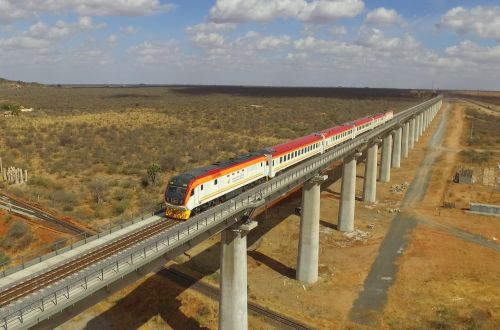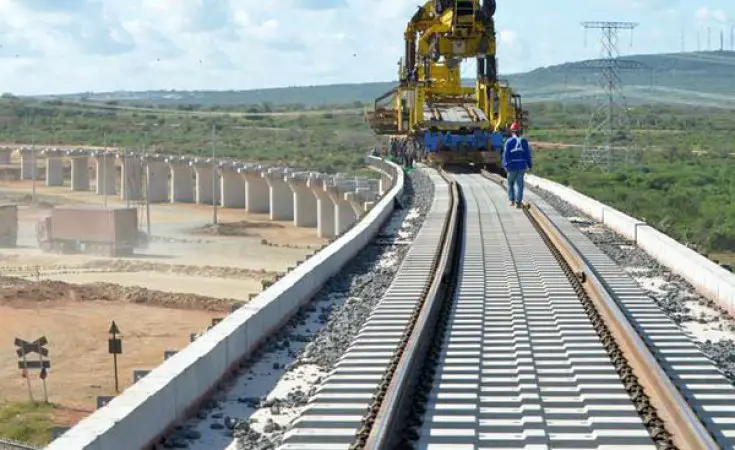The African continent is rallying behind the construction of a standard gauge railway that links the East and West Coast. The ambitious project aligns with the African infrastructure network that seeks to ensure seamless connectivity. Based on the remarks offered by Kenya’s Cabinet Secretary of Transport, this is the ultimate objective of the SGR. The standard gauge railway will connect the East Coast in Mombasa, Kenya, to the West Coast in Douala, Cameroon. The implementation of the project is already taking shape, and various partner states are already showing interest. Furthermore, this initiative will see the railway line become Africa’s longest railway line, from Kenya to Cameroon.
The Government of Kenya recently hosted the Regional Standard Gauge Railways (SGR) Cluster Meetings for the Northern Corridor Integration Projects (NCIP) in Mombasa through the Ministry of Roads and Transport. Uganda chaired the SGR Cluster, one of 14 Clusters under the NCI Programme. The primary objective of the meeting was to accelerate the implementation of the SGR by the various partner states involved, including Uganda, Kenya, Rwanda, South Sudan, and the Democratic Republic of the Congo.
The Significance of the Standard Gauge Railway Linking the East Coast and the West Coast
Once completed, the standard gauge railway linking the East and West Coast will benefit immensely. The railway line will ensure seamless connectivity between various regions across the African continent. “The ultimate objective, under the African infrastructure network, is to make sure that we connect the East coast here in Mombasa and the West coast through Douala in Cameroon,” noted Kenya’s cabinet secretary of transport, Kipchumba Murkomen.
The cabinet secretary also noted that seamless connectivity would be implemented in Kenya’s sister countries. The railway line will facilitate the transportation sector as a supplement to road transport. Currently, most East to West Africa cargo relies heavily on road transport. The standard gauge railway between the countries will also create special economic zones within these countries. Creating these zones will immensely facilitate economic and social improvement in the continent. In Kenya, the standard gauge railway has been hailed as one of its significant projects.
Following the commencement of commercial freight operations on January 1st, 2018, the SGR swiftly became the lifeline of the nation’s logistics network. Fast-forward to February 2024, and the SGR has successfully reached 2437 days of safe operations, maintaining a clean sheet free of accidents while etching an impressive record, having ferried over 12.124 million passengers and transported over 2.554 million TEUs (equivalent to 29.74 million tons) of goods across its expansive 472-kilometer span.
Also read:
Kenya to Begin Construction of Naivasha-Kisumu-Malaba Standard Gauge Railway (SGR) Route
The Scope of Implementation of the Ambitious Project
The Standard gauge railway linking the East and West African coast seeks to start its connectivity from Kenya. The Kenyan government has already implemented measures to ensure that it aligns with the project’s implementation schedule. Kipchumba Murkomen noted that the dream of the standard gauge railway is one and in motion. “I believe that the dream of SGR is on, we want to do it expeditiously,” he noted. Kenya wants to leverage the private sector to facilitate the Naivasha-Malaba standard gauge railway construction project. The minister noted that the project, which includes a revamp of the Kisumu port, will cost approximately $5.3 billion, which he says is reasonable. Its completion will pave the way for Uganda to continue the connectivity project to link the SGR. Other partner states are also coordinating to ensure that the construction of the railway line is fast-tracked.
The State of the Region Regarding the Project
The development of the Standard Gauge Railway (SGR) is synchronic with the development strategies of other East African Countries. Its development is incorporated in national spatial plans, with the rail route targeting regions with viable populations and sustainable economic activities. Criticisms, however, revolve around the ballooning debt to finance infrastructural development and the lack of prioritization of mega projects. The railway line will ensure seamless connectivity of various railway networks across the African continent. This is one of the aspects that makes the project dubbed one of Africa’s most ambitious and one of its longest railway lines.
Also read:
